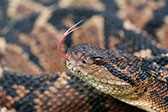
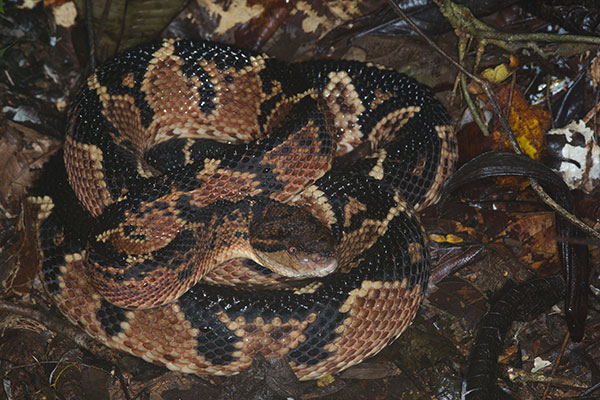
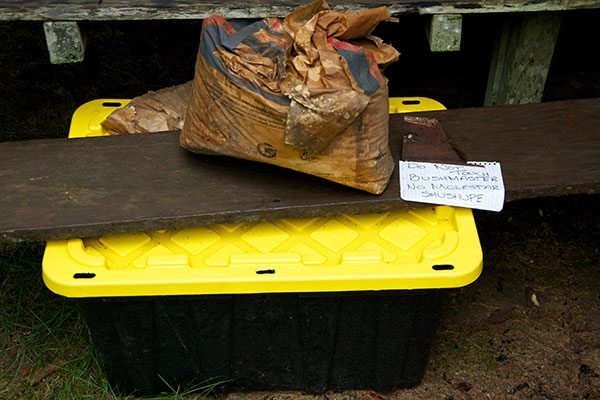

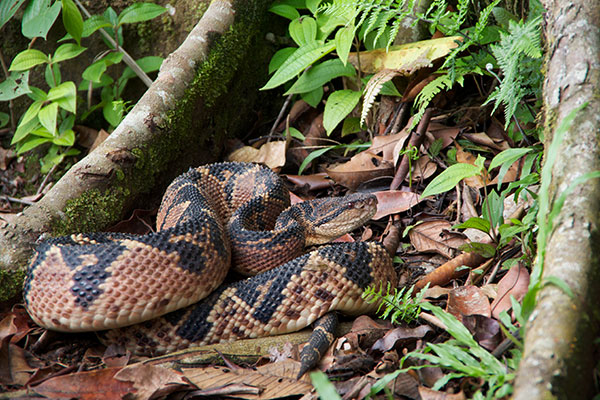
I ran about as fast down the steep and muddy main trail as was humanly possible, passing a considerably more careful Travis Cossette along the way. Eventually I saw Matt and Mike Pingleton in the trail, shining their flashlights on this huge viper a couple of feet into the forest. Matt and Mike had come across the Bushmaster coiled at the edge of the trail, and wanted to capture it so everyone in the group could see it the next day, but they lacked the gear and manpower required to subdue the largest venomous snake in the Western Hemisphere (and the largest pit viper in the world). So Matt had run up the hill to get reinforcements, and then run back down, in no doubt record-setting time. Just before that epic run, he and Mike had taken some photos of the snake in its original position on the trail, but that had spooked it enough that it started making an exit into the forest. Matt had managed to slow it down enough with a snake hook that it settled back in a few feet away, instead of leaving the area entirely. The first photo above shows the snake in this spot, as I first saw it.
There's no way this seven-foot monster Bushmaster (more like five-and-a-half feet the next day; apparently it shrunk overnight) would have fit in any standard-issue snake bag, but fortunately Matt had brought along a large pillowcase just in case he should chance upon any huge pit vipers. Matt and Travis each manned a pair of snake tongs, and Mike and Marisa used a pair of snake hooks to hold the pillowcase open from afar. I stood a safe distance away and kept the pointy parts of the snake lit up with a bright flashlight. After a medium amount of thrashing, the four of them managed to convince the beast that it was safer inside the pillowcase than outside, and the snake was ours for the transporting. First we took turns holding the pillowcase up (well away from our bodies) to admire the mass and weight of this prize catch. Then Matt and Travis shared the burden of carrying it back up the hill to the field station buildings.
We kept it overnight in the pillowcase, which was in turn inside a large strong plastic bin, whose lid was held down by a long two-by-eight board, which was in turn held down by half a bag of cement. (I didn't ask how half a bag of cement happened to be available.) Marisa added a label in English and Spanish so nobody would pop open this contraption out of curiosity overnight. The next day we took the snake out three times, once for the benefit of the people who were leaving early that morning, once to get it to pose in a more natural-looking spot at the base of a large buttress root, and a third time (after Marisa schlepped it all the way back down the hill, now in a tightly-closed bucket rather than a pillowcase) for the benefit of Lorrie Smith, who was staying in a building down near the river. Early that afternoon it was released at the spot of capture, and it meandered off into the forest, perhaps to provide future thrills to future Santa Cruz field station visitors.
Here is a complete list of the herps I saw in the wild on my 2013 MT Amazon Expeditions trip.
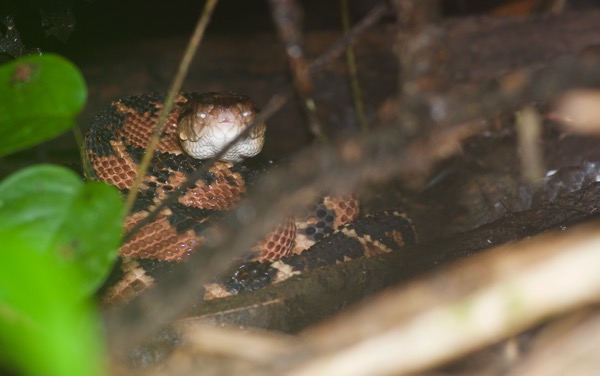
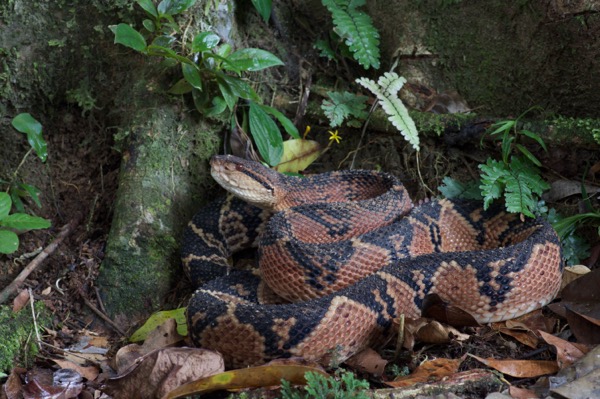
Cliff was between me, who had passed the snake without noticing it, and Matt Cage, who was a little behind us photographing a frog. The three of us wrangled the quite deadly and not particularly cooperative snake into a pillowcase, with Matt doing most of the work. (Indeed, this was Matt's lucky Bushmaster pillowcase, the same one used two years earlier for his and my first Bushmaster encounter.) Cliff carried the pillowcase for the rest of the night hike in his satchel, eventually depositing it into a larger container back at camp. Everyone took pictures the next day, and we returned the snake to the exact spot of capture in the evening.
My Travelogues and Trip Lists page includes a complete list of the herps I saw in the wild on my 2016 MT Amazon Expeditions trip.
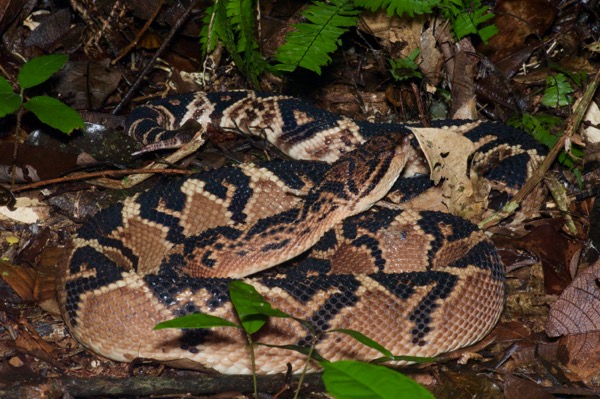
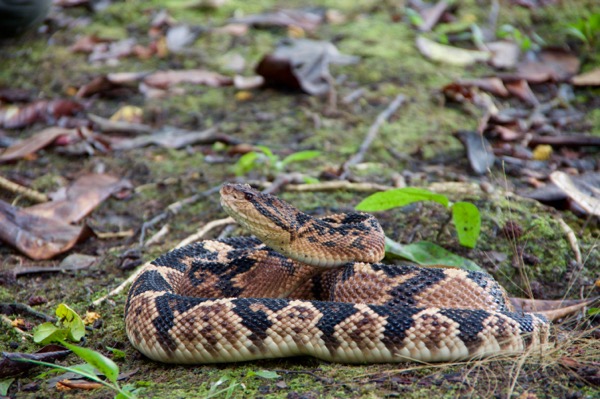
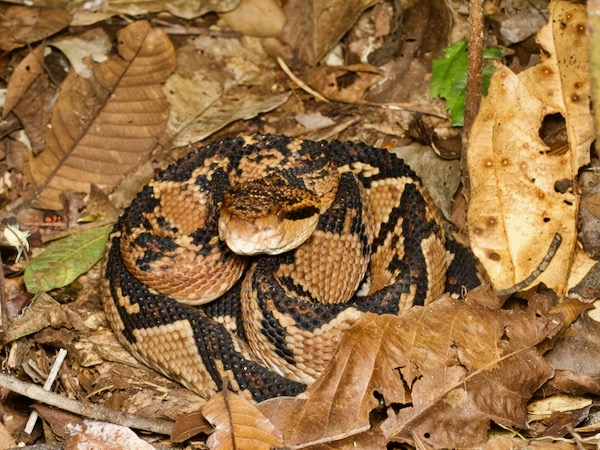
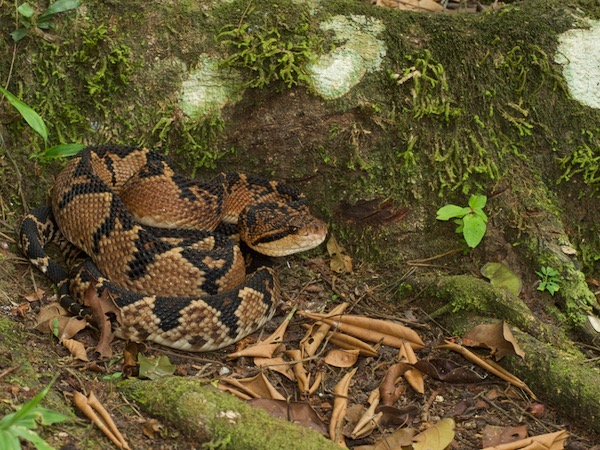
- Bartlett, R.D., and Bartlett, P. 2003. Reptiles and Amphibians of the Amazon: An Ecotourist's Guide
- Dixon, J. R. and Soini, P. 1986. The Reptiles of the Upper Amazon Basin, Iquitos Region, Peru
- Duellman, W.E. 2005. Cusco Amazónico: The Lives of Amphibians and Reptiles in an Amazonian Rainforest